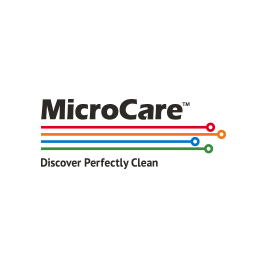Tergo™ PF100-IPA High Purity Ionic & Static Remover (3M Novec™ 7100IPA Replacement)
Product Information
Tergo PF100-IPA is ideal to mitigate situations where static or ionic charges are an issue
Applications:
- Control ionic charges
- Solvent drying/moisture absorption
- Precision cleaning of optics and circuitry
- An excellent replacement for HFCs, PFCs and other fluorninated fluids
- Great alternative for 3M Novec™ 7100 IPA solvent
Features:
- A true azeotrope of HFE and Isopropyl Alcohol
- Added polarity of IPA aids in cleaning organic soils
- Use for vapor degreasing or benchtop cleaning applications
- Excellent material compatibility including most plastics, ceramics, glass and metal components
- Removes particulate, fingerprints and light soils
- Help prevent bioburden and dendrite growth
- Hydrolytically stable: doesn't require chemical stabilizers or scavengers
- High density, low viscocity and low surface tension for effective soil removal
Tergo PF100-IPA High Purity and Static Remover is a true azeotrope of a modern HFE with Isopropyl Alcohol. It is ideally suited for use in vapor degreasing equipment or bench-top applications. It offers improved solvency for polar soils, compared to neat fluorocarbons, while maintaining excellent compatibility with most plastic, ceramic, and metal components. Typical applications include precision and specialty cleaning of optics or circuitry, solvent drying, and rinsing for removal of particulate, fingerprints, and light soils from metal, plastic, and glass parts.
Tergo PF100-IPA can replace hydrofluorocarbons (HFCs) and perfluorocarbons (PFCs) in medical and aerospace applications where critical cleaning is paramount and there is a focus towards bioburden or dendrites.
Tergo PF100-IPA is hydrolytically stable and therefore does not require chemical stabilizers or scavengers to prevent it from breaking down in the presence of excess water or mildly acidic activators.
Product Details
Product Image |
Part Number | Package | Weight | Size | Technical Data Sheet | Safety Data Sheet |
|---|---|---|---|---|---|---|

|
TPF100IPAGL Tergo TPF100IPA Novec 7100IPA MCC-TPF100IPAGL | Glass | 1.13 kg 2.5 lbs. | 1 L 0.3 Gallon | ||

|
TPF100IPAG Tergo TPF100IPA Novec 7100IPA MCC-TPF100IPAG | Pail | 4.5 kg 10 lbs. | 3.78 L 1 Gallon | ||

|
TPF100IPAP Tergo TPF100IPA Novec 7100IPA MCC-TPF100IPAP | Pail | 24.9 kg 55 lbs. | 18.9 L 5 Gallons | ||

|
TPF100IPAD Tergo TPF100IPA Novec 7100IPA MCC-TPF100IPAD | Drum | 226.8 kg 500 lbs. | 208.2 L 55 Gallons |
| Part Number | MCC-TPF100IPAGL | MCC-TPF100IPAG | MCC-TPF100IPAP | MCC-TPF100IPAD |
|---|---|---|---|---|
| Package | Glass | Pail | Pail | Drum |
| Weight | 1.13 kg 2.5 lbs. | 4.5 kg 10 lbs. | 24.9 kg 55 lbs. | 226.8 kg 500 lbs. |
| Size | 1 L 0.3 Gallon | 3.78 L 1 Gallon | 18.9 L 5 Gallons | 208.2 L 55 Gallons |
| Technical Data Sheet | ||||
| Safety Data Sheet |
| Appearance | Clear, colorless |
|---|---|
| Odor | Slight |
| PEL (ppm, 8-hr TWA) | 980 (Isopropanol) |
| Boiling Point | 51°C / 124°F |
| Chemical Family | HFE |
| Evaporation Rate | Fast |
| Flashpoint | None, nonflammable |
| Ozone Impact | Zero |
| RoHS & WEEE Compliant | |
| Safety Rating | Non-flammable |
| Vapor Pressure @ 20ºC | 0.29 |

